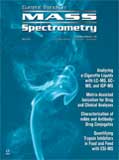Replacing Stacked Ring Reflectron Lenses with Segmented Monolithic Resistive Glass
Reflectron lenses are used in time-of-flight (TOF) mass spectrometers to create an electrostatic field to alter ion flow, providing for a longer flight path and therefore greater resolution.
Reflectron lenses are used in time-of-flight (TOF) mass spectrometers to create an electrostatic field to alter ion flow, providing for a longer flight path and therefore greater resolution. Current reflectron-type TOF-MS instruments use complex multi-piece stacked ring assemblies that require time consuming assembly and cleaning processes. They also require the use of a voltage divider in each layer to control the electric field.
Segmented monolithic lenses made from resistive glass can replace traditional stacked ring reflectron lenses currently used in mass spectrometers. Resistive glass tubes are designed to guide charged particles by generating a highly uniform electric field. Resistive glass products are composed of a proprietary lead silicate glass that has been specially processed to create an integral semiconductive layer on the surface.
Prior studies detailing the use of a resistive glass reflectron tube in an orthogonal TOF system showed the resistive glass tube had lower FWHM values, indicating a better energy focus, while comparative spectra between a traditional stacked ring assembly and the resistive glass tube were nearly identical (1).
An additional patent was granted to Photonis in 2012 for the manufacture of varied, nonlinear electric fields in resistive glass tubes. This new manufacturing capability enables instrument designers to produce nonlinear and dynamic fields within the lens for better instrument performance. Axial lines can be applied for use as a collision cell, or rings can be applied for use as a segmented reflectron lens.

A reflectron lens made with resistive glass provides a solid assembly replacement for a stacked ring assembly yet provides the same ability to alter ion flow. This innovation is a form-fit-function replacement for the multi-piece stacked ring assemblies, while providing the ability to manipulate the electric field inside the resistive glass tube.
The single piece assembly also greatly simplifies the cleaning and assembly process currently required for stacked ring lenses. Resistive glass can be easily cleaned with water, acetone, methanol, or IPA without degrading performance, and is resistant to scratches from light to moderate abrasions.
Reference
- S. Ritzau, B. Laprade, S. Mrotek, and R. Leffingwell, “A Direct Comparison of a Resistive Glass and Stacked-Ring Reflectron,” Burle Electro-Optics, ASMS 2006.

Photonis USA
660 Main Street, Sturbridge, MA 01566
tel. (508) 347-4000
Website: www.photonis.com

Free Poster: NDSRI Risk Assessment and Trace-Level Analysis of N-Nitrosamines
April 25th 2025With increasing concern over genotoxic nitrosamine contaminants, regulatory bodies like the FDA and EMA have introduced strict guidelines following several high-profile drug recalls. This poster showcases a case study where LGC and Waters developed a UPLC/MS/MS method for quantifying trace levels of N-nitroso-sertraline in sertraline using Waters mass spectrometry and LGC reference standards.
New TRC Facility Accelerates Innovation and Delivery
April 25th 2025We’ve expanded our capabilities with a state-of-the-art, 200,000 sq ft TRC facility in Toronto, completed in 2024 and staffed by over 100 PhD- and MSc-level scientists. This investment enables the development of more innovative compounds, a broader catalogue and custom offering, and streamlined operations for faster delivery. • Our extensive range of over 100,000 high-quality research chemicals—including APIs, metabolites, and impurities in both native and stable isotope-labelled forms—provides essential tools for uncovering molecular disease mechanisms and exploring new opportunities for therapeutic intervention.
New Guide: Characterising Impurity Standards – What Defines “Good Enough?”
April 25th 2025Impurity reference standards (IRSs) are essential for accurately identifying and quantifying impurities in pharmaceutical development and manufacturing. Yet, with limited regulatory guidance on how much characterisation is truly required for different applications, selecting the right standard can be challenging. To help, LGC has developed a new interactive multimedia guide, packed with expert insights to support your decision-making and give you greater confidence when choosing the right IRS for your specific needs.
Using the Carcinogenic Potency Categorisation Approach (CPCA) to Classify N-nitrosamine Impurities
April 25th 2025Learn how to manage nitrosamine impurities in pharmaceuticals with our free infographic. Discover how the CPCA approach establishes acceptable intake limits and guides the selection of NDSRI reference samples. Stay compliant and ensure safety with our ISO-accredited standards.

.png&w=3840&q=75)

.png&w=3840&q=75)



.png&w=3840&q=75)



.png&w=3840&q=75)







